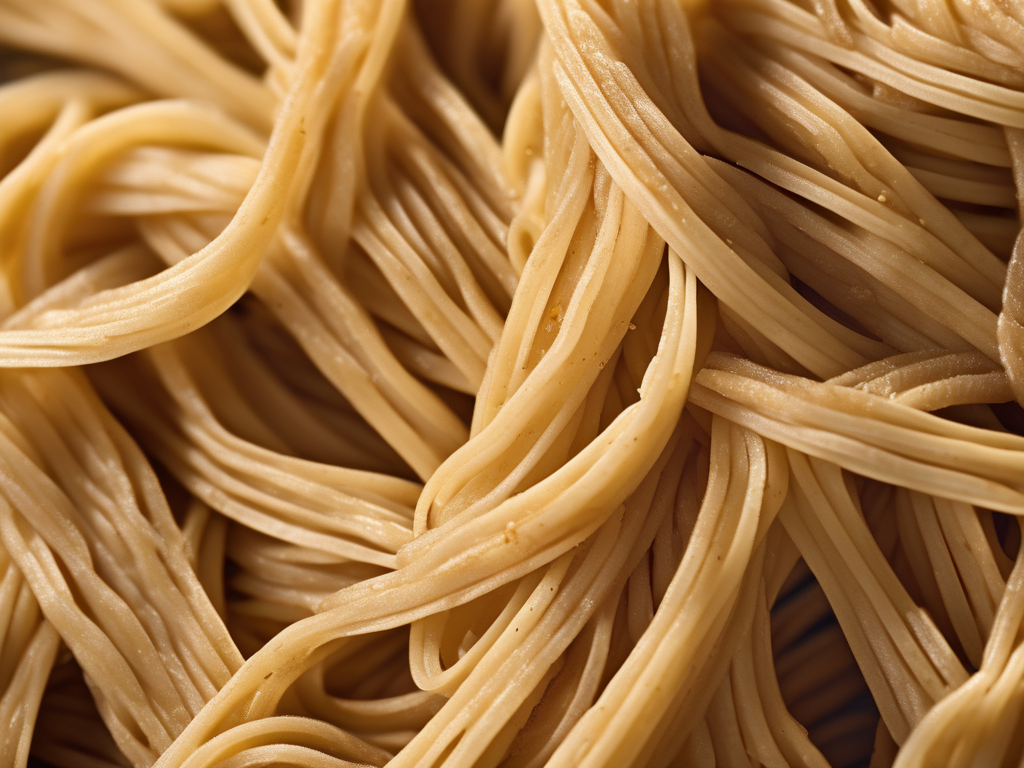
Tips for Extending the Shelf Life of Dry Linguini in a Hot Climate
Get Your Free Food Safety Cheat Sheet
30 most common foods with instant answers. Print it and stick it on your fridge—completely free!
Tips for Extending the Shelf Life of Dry Linguini in a Hot Climate
Are you struggling to keep your dry linguini fresh in a hot climate? High temperatures can accelerate the degradation of pasta, leading to a shorter shelf life and potential food safety risks. In this blog post, we will explore practical tips to help you extend the shelf life of dry linguini, ensuring that your pasta stays fresh and safe to eat even in hot weather conditions. (Dry linguini)
Understanding the Shelf Life of Dry Linguini
Before we dive into the tips to extend the shelf life of dry linguini, it's essential to understand the factors that can affect its longevity. Dry linguini, like other types of pasta, is a durum wheat product that has been dried to remove moisture. While dry pasta has a longer shelf life compared to fresh pasta, it is still susceptible to environmental conditions that can impact its quality and safety.
Factors Affecting the Shelf Life of Dry Linguini
- Temperature: High temperatures can cause dry linguini to absorb moisture from the air, leading to a shorter shelf life.
- Humidity: Excessive humidity can contribute to the growth of mold on dry linguini, compromising its safety.
- Light: Exposure to light can cause dry pasta to deteriorate more quickly, affecting its texture and flavor.
- Storage Conditions: Proper storage is crucial to maintaining the quality of dry linguini and preventing contamination.
Tips for Extending the Shelf Life of Dry Linguini
Now that we have a better understanding of the factors that can impact the shelf life of dry linguini, let's explore some practical tips to help you preserve your pasta in a hot climate.
1. Store Dry Linguini in a Cool, Dark Place
- Keep your dry linguini in a cool and dark pantry or cupboard away from direct sunlight.
- Avoid storing pasta near sources of heat, such as the stove or oven, to prevent moisture absorption.
2. Use Airtight Containers for Storage
- Transfer dry linguini from its original packaging to airtight containers or resealable bags to protect it from moisture and air exposure.
- Make sure the containers are clean and dry before storing the pasta to prevent contamination.
3. Monitor Temperature and Humidity Levels
- Use a thermometer and hygrometer to monitor the temperature and humidity levels in your storage area.
- Aim to keep the temperature below 77°F (25°C) and the humidity below 60% to maintain the quality of dry linguini.
4. Rotate Stock Regularly
- Practice the "first in, first out" principle when storing dry linguini to ensure that older pasta is used before newer purchases.
- Check the expiration date on the packaging and prioritize using pasta that is closer to expiration.
5. Check for Signs of Spoilage
- Inspect dry linguini for any signs of mold, off odors, or discoloration before cooking.
- If you notice any abnormalities, discard the pasta to prevent foodborne illness.
Conclusion
By following these tips for extending the shelf life of dry linguini in a hot climate, you can ensure that your pasta remains fresh, safe, and enjoyable to eat. Proper storage practices, monitoring environmental conditions, and regular inspection are key to preserving the quality of dry pasta and minimizing food waste. Remember to store your dry linguini in a cool, dark place, use airtight containers, monitor temperature and humidity levels, rotate stock regularly, and check for signs of spoilage to maximize its shelf life. With these proactive measures, you can continue to enjoy delicious pasta dishes without worrying about spoilage or food safety concerns. [Dry linguini](/food/dry linguini) (Dry linguini)
Related Posts
Here are some other articles you might find helpful:
Authoritative Food Safety References
These agencies and university labs inform every tip and health precaution we publish.
USDA FoodKeeper – Cold Storage Guidelines
Official refrigerator, freezer, and pantry timelines maintained by the U.S. Department of Agriculture.
Visit USDA FoodKeeperFDA Produce Safety Rule & Grower Guidance
Field-to-fridge handling practices that prevent contamination of fruits, vegetables, and leafy greens.
Visit FDA Produce SafetyCDC Foodborne Illness Prevention Hub
Surveillance-backed guidance on pathogens, symptoms, and steps to reduce foodborne illness risk.
Visit CDC Food SafetyUC Davis Postharvest Technology Center
University research detailing optimal storage atmospheres for produce after harvest.
Visit UC Davis PostharvestPenn State Extension – Home Food Preservation & Safety
Peer-reviewed extension bulletins on safe canning, chilling, and reheating practices.
Visit Penn State ExtensionGet Your Free Food Safety Cheat Sheet
30 most common foods with instant answers. Print it and stick it on your fridge—completely free! Want more? Upgrade to the complete guide with 70+ foods.
Scan your food directly and get instant safety info using our AI-powered camera feature.